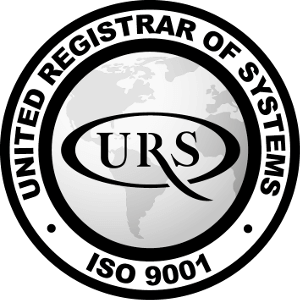 |
|
Communications Radio HF
Emetteur-Récepteur
Barrett 2050 HF SSB
Ce produit n'est plus disponible. |
|
Caractéristiques - Spécifications
Emetteur-récepteur Barrett 2050
- Voix Sécurisée longue distance, e-mail, téléphone, et suivi
- Installation mobile rapide ou installation station de base
- Fiable et facile à utiliser
- Indépendant de tous les autres réseaux de communication
- Libre de communiquer - appels gratuits
|
 |
Le Barrett 2050 est un émetteur-récepteur polyvalent et robuste de 1,6 MHz à 30 MHz, 125 W PEP, éprouvé sur le terrain qui peut être facilement configuré pour des
besoins opérationnels et précis des clients.
Le Barrett 2050 offre tous les modes communs de transmission HF, tous les formats actuellement utilisés appel sélectif, établissement de la liaison automatique
MIL-STD 188-141B et une nouvelle génération, facile à utiliser, l'option Frequency Hopping.
Le 2050, logé dans un chassis étanche en aluminium léger et extrêmement robuste, répond à la norme MIL-STD 810G pour la chute, la poussière, la température, les chocs et vibrations.
En associant l'émetteur-récepteur 2050 avec d'autres produits de la série 2000, celui-ci offre une connectivité e-mail, fax, téléphone et données au sein d'un réseau HF et au-delà à
la fois au réseau téléphonique international et l'internet.
Caractéristiques du Barrett 2050
La souplesse de configuration
L'émetteur-récepteur 2050 est conditionné comme un émetteur-récepteur de bureau (contrôle local) et avec l'ajout d'un pack mobile simple et peu coûteux, le 2030 est
rapidement transformé en un émetteur-récepteur mobile (montage tronc). Cette fonctionnalité simplifie la logistique de stockage de l'émetteur-récepteur adapté à la bonne application.
La conception modulaire de l'ensemble des produits de la série 2000 permet à un émetteur-récepteur 2050 de base de s'adapter rapidement et facilement entre la station de base et une
configuration mobile, et une configuration fax, e-mail et données.
|  |
Appel sélectif
Equipé à la fois d'une CCIR 493-4, un système quatre et six chiffres dont le protocole est disponible pour distribution gratuite et d'un protocole OEM qui est
entièrement compatible avec d'autres fabricants majeurs de systèmes HF quatre et six chiffres qui utilisent des systèmes de cryptage.
Appels téléphone avec ligne directe
L'option "TELCALL" offre un accès numérotation direct avec les terminaux Barrett Communications HF et la plupart des terminaux d'autres fabricants.
Etablissement d'une liaison automatique (ALE)
Une option interne intégrée entièrement interopérable avec les systèmes FED-STD 1045 ALE. Également capable de numérotation téléphonique totale en 16 chiffres
(par FED-STD 1045 ALE comme moyen de signalisation) avec le Barrett ALE 2060 équipé interconnexions.
Option de saut de fréquence
Un système de saut de fréquence unique et simple à utiliser qui n'a pas le temps d'entrée ou l'heure d'entrée tardive. Il suffit d'entrer le numéro de groupe,
la clé de chiffrement et de parler.
Appel sécurisé
Une option qui fournit un niveau moyen de cryptage de la voix pour la confidentialité des communications.
Email, fax et données HF
L'émetteur-récepteur 2050 est entièrement prêt à l'interface avec une variété de modems internes et externes y compris le système de messagerie Barrett 2020 HF
qui fournit une connectivité email complète via une station de base connectée à l'internet.
"SMS Pagecall"
Permet de courts messages texte envoyés d'un émetteur-récepteur 2030 à un autre. Les émetteurs-récepteurs Barrett 2030 ont des touches d'entrée alpha-numériques
(semblables à des téléphones mobiles) qui permettent l'entrée directe de messages texte (sans avoir besoin d'un PC ou un périphérique d'entrée de type Palm).
Suivi GPS
Une option qui prend en charge la connexion à un récepteur GPS externe pour des applications de suivi en utilisant le système de suivi Barrett 977.
Traitement numérique du signal (DSP)
Une seule puce DSP assure la modulation et la démodulation de toutes les signalisations "on air" utilisées dans le ALE, d'appel sélectif et des processus syllabiques muets et
fournit la réduction du bruit des signaux reçus.
Une architecture simple
L'émetteur-récepteur utilise seulement deux microprocesseurs, le processeur principal utilise un noyau tendre chargé pendant que le second processeur est utilisé à
l'intérieur de la tête de commande pour faire fonctionner l'écran et le clavier.
BITE - Built-in Test Equipment
Des tests de performance du récepteur, Selcall, syllabique muet, le fonctionnement du VCO et la viabilité du port de communication série.
Programmation IR ou port série
Pour faciliter la programmation dans un véhicule, un ordinateur portable chargé avec l'ensemble de programmation de la série 2000 permet de charger les paramètres d'un
émetteur-récepteur sans avoir besoin de câbles via le port IR déporté.
Connecteur seconde antenne
Permet à chaque canal de sélectionner l'une des deux antennes - idéal quand les antennes à longue distance et courte sont utilisées.
Dimensions du Barrett 2050


Spécifications du Barrett 2050
Spécifications générales du Barrett 2050
| Standards |
Exceeds/complies with Australian/ New Zealand standard AS/NZS 4770:2000 and AS/NZS 4582:1999
Exceeds/complies with European standard
ETSI 300 373 and associated Amendment A
Exceeds/complies with EMC and vibration standard IEC 945
Complies with MIL-STD 810G for drop, dust, temperature, shock and vibration |
| Transmit frequency range |
1.6 MHz to 30 MHz (continuous) |
| Receive frequency range |
250 kHz to 30 MHz (continuous)* |
| Channel capacity |
Up to 500 programmable channels (simplex or semi-duplex) |
| Frequency resolution |
10 Hz program mode
1 Hz tunable receiver |
| Frequency stability |
±10 Hz or better than 0.3 ppm over temperature range -30°C to +70°C |
| Operating modes |
J3E (USB, LSB) - H3E (AM) - J2A (CW) - J2 (AFSK) Optional J2B (AFSK) with narrow filter |
| Operating temperature |
-30°C to +70°C humidity 95% relative, non-condensing |
| Frequency hopping |
25 or 5 hops per second with external syncronisation unit (ESU) supplied when the option is fitted.
The Barrett frequency hopping system requires no master station, all stations are synchronised and ready
to communicate on switch on, synchronisation is not effected by propagation or local interference and there
is no late entry synchronisation delay |
| Supply voltage |
13.8 V DC +20% / -10% (negative ground) polarity protected.
Over voltage protected. 100 to 260 VAC or 11 to 16 V DC with power supply |
| Current consumption |
470 mA standby (muted, back lighting off) |
| Selcall system |
Based on CCIR 493-4, four and six digit systems. Protocol available for free distribution.
Fully compatible with other major HF manufacturers' four and six digit systems including encrypted systems |
| Switching speed |
Less than 15 mS Tx to Rx, Rx to Tx |
* reduced sensitivity 250 kHz to 500 kHz
Récepteur
| Sensitivity |
-120 dBm (0.224 uV) for 10 dB SINAD - J3E Mode pre-amp on
-110 dBm (0.708 uV) for 20 dB SINAD - J3E Mode pre-amp off |
| Selectivity J3E |
-1 kHz and + 4 kHz better than 50dB
-2 kHz and +5 kHz better than 55dB
-5 kHz and +8 kHz better than 60dB |
| Selectivity J2B (optional) |
-500 Hz and +500 Hz better than 60 dB The level of an unwanted signal above the level of a wanted signal
that will reduce the SINAD of the wanted signal from 20 dB SINAD to 14 dB SINAD |
| Blocking |
-20 kHz and +20 kHz better than 71 dB - The level of an unwanted signal above the level of a wanted signal
that will reduce the SINAD of the wanted signal from by 6 dB or cause and output level change of 3 dB |
| Intermodulation |
Better than 89 dBµV - The level of two unwanted signals, that are within 30 kHz.of the wanted signal,
above the level of a wanted signal that reduces the SINAD of the wanted signal to 20 dB |
| Spurious response ratio |
Better than 70 dB |
| Reciprocal mixing |
Better than 105 dBµV |
| In-band IMD |
Better than 34 dB |
| Audio output |
4 W into 4 ohm at less than 2% distortion |
| Audio response |
Less than 6 dB variation from 350 Hz to 2700 Hz. |
| Input protection |
Better than 30 V RMS from a 50 Ohm source |
Emetteur
| RF output power |
125 W PEP voice ±1.5dB
or 30 W PEP voice ±1.5dB
or 10 W PEP voice ±1.5dB |
| Duty cycle |
100% two-tone input signal with fan option |
| Intermodulation Products |
better than -31 dB below PEP (25 dB below two tone peak) |
| Audio frequency response |
Less than 6 dB variation 350 Hz to 2750 Hz |
| Current consumption |
Voice average less than 9 Amps typical
Two tone less than 12 Amps typical |
Gamme Complète Radiocommunications
Communications Sans Licence - Radiocommunications PRO
PRO : Kenwood - Motorola - Icom -
Codan - Barrett - Vertex
Haut de la page
|












